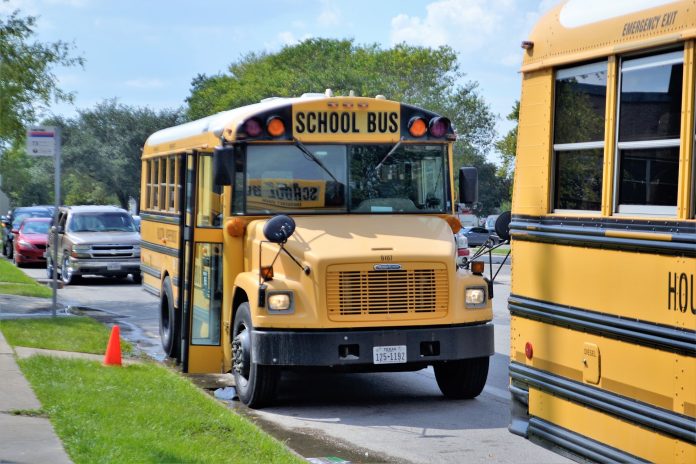Did you watch the 48 Hours segment “Remembering the Chowchilla Kidnapping” on CBS News last month? I sure did. The story about the largest kidnapping in U.S. history from a Dairyland Union School District school bus in California really hit home for me. The horrifying accounts from the children who are now adults was jarring. The long-term trauma that exists today was a stern reminder that we need to protect the students in our care. One thing that jumped out to me about this incident was the importance of school bus driver training and, in hindsight, the bad judgment call that was made by veteran school driver Ed Ray.
According to the 48 Hours report and the victims’ recollections, Ray had just let two students off the bus when he came upon a van parked in the middle of a rural road. Ray tried to drive around the van, but a gunman approached the loading door and demanded to be allowed on board. Ray apparently opened the door and asked the armed man what was going on. That was a mistake, but we must remember this was nearly 50 years ago. Still, if Ray didn’t open the bus door, could this tragic series of events have been avoided? Maybe.
It all comes back to training school bus drivers to avoid risky situations and not putting themselves and the students they transport in harm’s way. “The school driver should never get out of the driver seat without turning off the bus and taking the keys. Also, if something strange happens on the road, the school bus driver should contact dispatch or 911 to call for help. The school bus driver should be trained not to stop if they see something suspicious or dangerous. Should a situation escalate, don’t be the hero and try to buy time if a hostile situation occurs until help arrives,” said Jeff Cassell, president of the School Bus Safety Company.
I believe that it would be a highly unlikely scenario in 2023 for students to be mass kidnapped with all the technology onboard like video security systems and GPS plus personal communication devices like cell phones and smart watches, but unexpected incidents can and do happen.For instance, last month, a Maryland middle school student was nearly kidnapped at their school bus stop. Other students who witnessed the incident intervened and saved the student from the attacker. Witnesses reported the situation to the authorities and the alleged perpetrator was arrested. It seems to me that the students who rode the school bus together likely acted as Good Samaritans to save one of their own. That begs the question: Should we be training students to be prepared for these sorts of incidents or is that the parents responsibility?
Also last month, a 17-year-old high school student shot and wounded two administrators at a Denver, Colorado, high school. Does this story evoke memories of the Uvalde, Sandy Hook Elementary and Columbine shootings? It’s another recent example of a school shooting that has once again shocked our nation.
While school bus shootings are rare, there are documented incidents. You might recall on Jan. 29, 2013, a 65-year-old man in Midland City, Alabama, boarded a school bus and shot driver Chuck Poland before taking a 5-year-old boy hostage in a man-made bunker. The standoff lasted seven days before the hostage was rescued and the shooter was killed by an FBI Crisis Team.
It is important to remember that school buses are vulnerable targets for attackers. As such, it is crucial for schools and school districts to have plans in place for responding to an active shooter event on a school bus. Training for school bus drivers on how to proactively respond is a crucial part of ensuring the safety of students and staff.
Let these incidents serve as vivid reminders of the importance of training school bus drivers and students. School districts need to have comprehensive plans in place for responding to an active shooter event on a school bus and train for it on an annual basis. A plan is great, but without consistent and updated training, an unexpected situation could cause chaos and disarray.
No matter what unexpected event might happen, it’s our job as an industry to rise to the occasion and support each other when tragedy strikes. These painful memories from our past need to act as a compass for our future. Let’s learn from them and make our staff, communities and students a little safer in the process. Keep up on your training!
Editor’s Note: As reprinted in the April 2023 issue of School Transportation News
Related: 48 Hours Airs Interview with Chowchilla Kidnapping Survivors
Related: (STN Podcast E153) Bold Goals: Reflections on Chowchilla Abductions & Female Industry Leadership
Related: Uvalde Shooting Stresses Importance of School Bus Safety, Security Training
Related: (STN Podcast E126) Tech & How To Use It: Chowchilla Kidnapping Lessons & Driver Training Insights
















